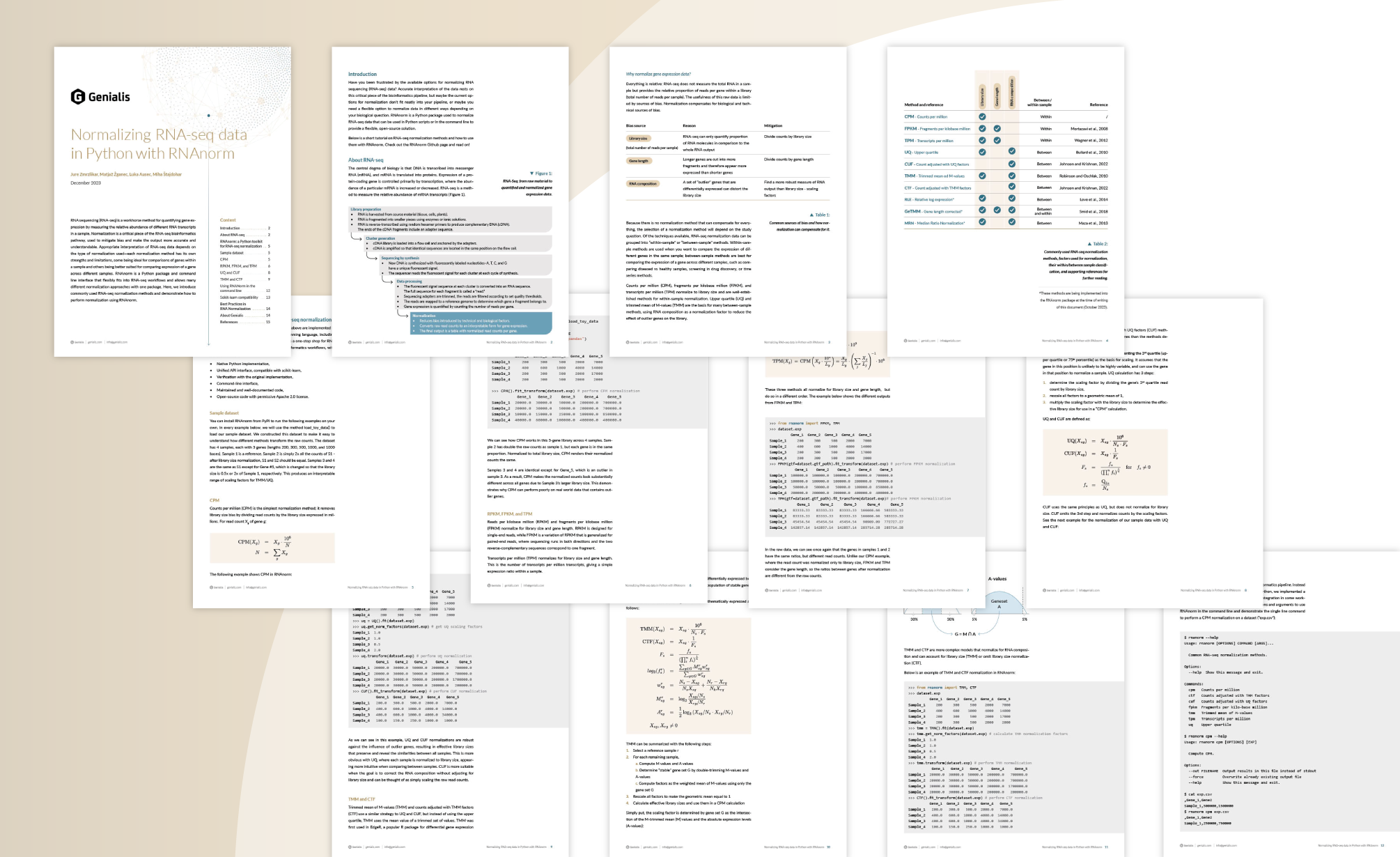RNA sequencing (RNA-seq) is a workhorse method for quantifying gene expression by measuring the relative abundance of different RNA transcripts in a sample. Normalization is a critical piece of the RNA-seq bioinformatics pathway, used to mitigate bias and make the output more accurate and understandable. Appropriate interpretation of RNA-seq data depends on the type of normalization used—each normalization method has its own strengths and limitations, some being ideal for comparisons of genes within a sample and others being better suited for comparing expression of a gene across different samples. RNAnorm is a Python package and command line interface that flexibly fits into RNA-seq workflows and allows many different normalization approaches with one package. Here, we introduce commonly used RNA-seq normalization methods and demonstrate how to perform normalization using RNAnorm.
Explore various RNA-Seq data normalization techniques, including a detailed guide on utilizing RNAnorm!

